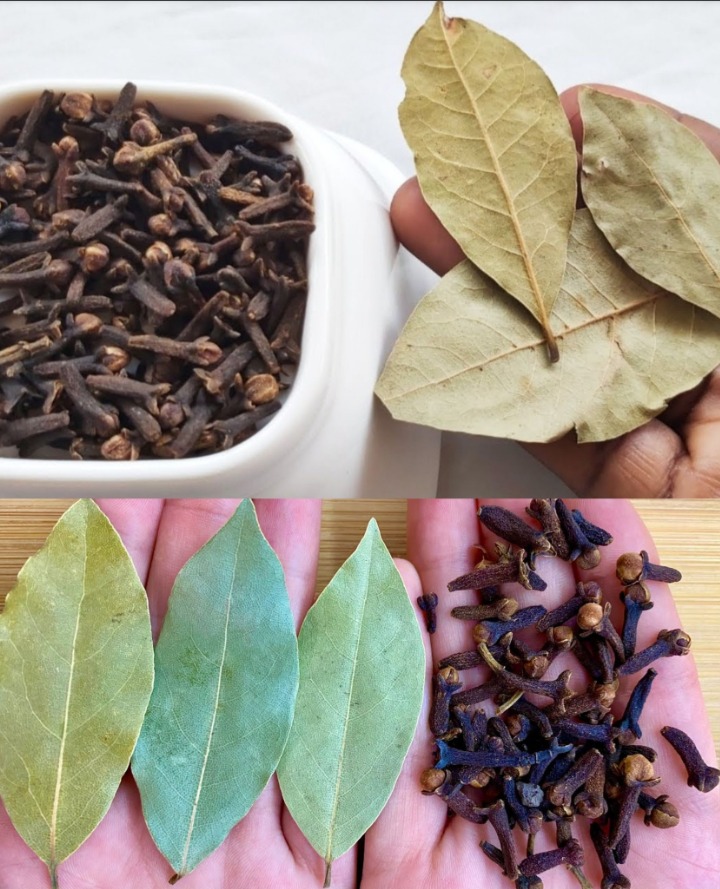Bay leaves (Laurus nobilis) have been revered in traditional medicine for centuries. Known for their aromatic flavor and fragrant oils, bay leaves have been thought to offer a range of health benefits, from lowering blood pressure to aiding digestion and even improving blood sugar regulation. While bay leaves are widely used in culinary dishes, there is an increasing interest in their potential medicinal uses. In this article, we explore the scientifically backed health benefits of bay leaves based on current research.
1. What Are Bay Leaves?
Bay leaves are aromatic, leathery leaves from the bay laurel tree, Laurus nobilis. This evergreen tree is native to the Mediterranean region and has been used for culinary, medicinal, and symbolic purposes for thousands of years.
Bay leaves contain various bioactive compounds, including essential oils, flavonoids, polyphenols, and tannins, which contribute to their medicinal properties. Some of the key compounds found in bay leaves include:
- Eugenol: A compound with anti-inflammatory and antioxidant properties.
- Quercetin: A flavonoid that acts as a powerful antioxidant.
- Catechins: Polyphenolic compounds that help combat oxidative stress.
- Rutin: A bioflavonoid that strengthens blood vessels and promotes circulation.
Bay leaves are typically used in dried form, either whole or crushed, in soups, stews, and sauces to enhance flavor. However, they are also believed to have therapeutic properties when used in alternative medicine.
2. Scientifically Proven Health Benefits of Bay Leaves
A. Can Bay Leaves Lower High Blood Pressure?
High blood pressure (hypertension) is a common health problem that increases the risk of heart disease, stroke, and kidney damage. It is known that lifestyle changes, including dietary adjustments, can help reduce blood pressure. Bay leaves may have a role to play in managing blood pressure due to the bioactive compounds they contain.
Scientific Evidence:
A study published in the Journal of Nutrition & Metabolism (2020) explored the effects of caffeic acid and rutin—two key compounds found in bay leaves—on blood pressure. The study found that these compounds helped strengthen blood vessels and improve circulation, leading to a slight reduction in blood pressure.
Further research published in the Journal of Human Hypertension (2019) found that bay leaf extract has mild vasodilating effects, meaning it helps expand blood vessels, thus improving blood flow and reducing pressure.
✅ Fact: Regular consumption of bay leaf tea may support normal blood pressure levels, especially when combined with a heart-healthy diet.
❌ Myth: Bay leaves alone cannot instantly lower high blood pressure. The effects are gradual, and bay leaves should be used alongside other lifestyle changes and medication.
B. Can Bay Leaves Help Manage Diabetes?
Bay leaves have gained attention for their potential to help manage blood sugar levels, especially in people with type 2 diabetes. Diabetes is a metabolic disorder that affects the body’s ability to regulate blood glucose. Proper management of blood sugar is essential for preventing complications, and bay leaves may contribute to improved glucose metabolism.
Scientific Evidence:
A study published in the Journal of Clinical Biochemistry and Nutrition (2009) found that consuming 1-3 grams of bay leaf powder daily for 30 days significantly reduced fasting blood sugar levels in people with type 2 diabetes. The researchers attributed this effect to the polyphenols in bay leaves, which are thought to enhance insulin sensitivity.
Another study published in the Phytotherapy Research journal (2018) examined the effects of bay leaf extract on glucose metabolism. The study found that bay leaves helped reduce HbA1c levels, an important marker of long-term blood sugar control.
✅ Fact: Bay leaves contain polyphenols that may help regulate blood sugar levels, particularly in people with type 2 diabetes.
❌ Myth: While bay leaves may support blood sugar regulation, they cannot cure diabetes. They should be used in conjunction with medication, a healthy diet, and regular physical activity.
C. Can Bay Leaves Reduce Cholesterol and Fat in the Blood?
Cholesterol management is crucial for maintaining cardiovascular health. Bay leaves are believed to have properties that can help regulate cholesterol levels and improve overall lipid metabolism. Some studies suggest that bay leaves may help reduce levels of LDL (low-density lipoprotein) cholesterol and triglycerides.
Scientific Evidence:
A 2014 study published in the Journal of Functional Foods investigated the effects of bay leaf extract on cholesterol levels in animal models. The researchers found that bay leaf extract helped lower total cholesterol, LDL cholesterol, and triglycerides, contributing to better heart health.
In another study published in Phytomedicine (2020), bay leaf extract was shown to support lipid metabolism and help maintain healthy cholesterol levels. This suggests that bay leaves may help balance cholesterol and promote heart health.
✅ Fact: Bay leaves contain antioxidants and bioactive compounds that may help regulate lipid levels and support cardiovascular health.
❌ Myth: Bay leaves do not directly “dissolve” fat in the blood. They may assist with cholesterol management over time, but they should be used as part of a comprehensive approach to heart health, including a balanced diet and regular exercise.
3. How to Use Bay Leaves for Health Benefits
If you want to incorporate bay leaves into your diet for their health benefits, there are a few ways you can do so safely and effectively:
A. Bay Leaf Tea
One of the simplest ways to consume bay leaves is by brewing them into tea. Bay leaf tea is an easy and convenient way to enjoy the potential health benefits of bay leaves, especially for blood pressure and blood sugar regulation.
How to Make Bay Leaf Tea:
- Place 2-3 dried bay leaves in a cup or teapot.
- Pour boiling water over the leaves and cover the cup.
- Let the tea steep for 5-10 minutes.
- Strain the tea and enjoy. You can add honey or lemon for flavor, if desired.
Tip: Drinking bay leaf tea once or twice a day may support normal blood sugar and blood pressure levels.
B. Bay Leaf Powder
You can also use bay leaf powder, which is made by grinding dried bay leaves into a fine powder. This powder can be sprinkled on salads, soups, or smoothies to enhance flavor and provide potential health benefits.
How to Make Bay Leaf Powder:
- Dry bay leaves in the sun or in a dehydrator.
- Once completely dried, grind them into a fine powder using a spice grinder.
- Store the powder in an airtight container.
Tip: Start with small amounts of bay leaf powder (1-2 grams per day) and gradually increase as desired.
C. Bay Leaf Extract
For a more concentrated form of bay leaves, you can use bay leaf extract. This can be purchased in health food stores or online. Bay leaf extract is available in capsules, tinctures, or liquid form and may provide a higher concentration of bioactive compounds.
Tip: Always follow the recommended dosage instructions on the product label when using bay leaf extract. If you are unsure, consult a healthcare professional before use.
4. Other Health Benefits of Bay Leaves
In addition to their potential to regulate blood pressure, blood sugar, and cholesterol levels, bay leaves may offer other health benefits. Here are some additional areas where bay leaves may have a positive impact:
A. Digestive Health
Bay leaves have been used traditionally to aid digestion and relieve gastrointestinal discomfort. The compounds in bay leaves can help stimulate the production of digestive enzymes, improve appetite, and relieve bloating and indigestion.
B. Antioxidant Protection
Bay leaves are rich in antioxidants, including flavonoids and polyphenols. These compounds help protect the body from oxidative stress and inflammation, which can contribute to chronic diseases such as cancer, heart disease, and neurodegenerative disorders.
C. Anti-inflammatory Effects
The eugenol in bay leaves has anti-inflammatory properties that may help reduce inflammation in the body. This could be beneficial for conditions such as arthritis or other inflammatory diseases.
Conclusion:
Bay leaves, often used in cooking, hold significant potential for promoting health and wellness. While they are not a cure-all, scientific studies support their role in managing blood pressure, regulating blood sugar levels, and supporting heart health. By incorporating bay leaves into your diet, you may benefit from their antioxidant, anti-inflammatory, and cholesterol-regulating effects.
However, it’s important to remember that bay leaves should be part of a balanced, healthy lifestyle that includes proper diet, exercise, and medical treatment when necessary. As always, consult with a healthcare professional before using bay leaves as a remedy for any health condition.





